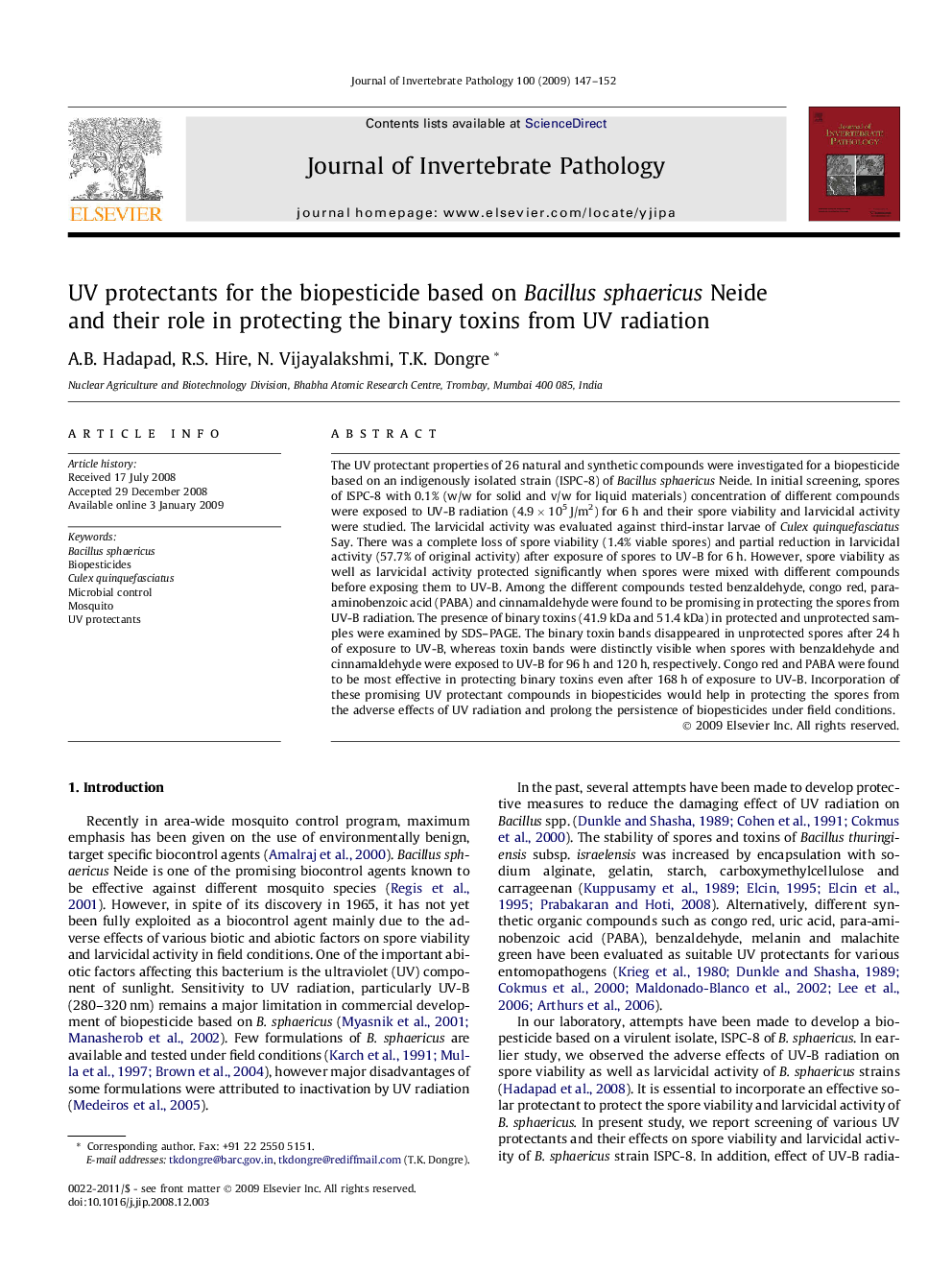| کد مقاله | کد نشریه | سال انتشار | مقاله انگلیسی | نسخه تمام متن |
|---|---|---|---|---|
| 6389885 | 1628239 | 2009 | 6 صفحه PDF | دانلود رایگان |

The UV protectant properties of 26 natural and synthetic compounds were investigated for a biopesticide based on an indigenously isolated strain (ISPC-8) of Bacillus sphaericus Neide. In initial screening, spores of ISPC-8 with 0.1% (w/w for solid and v/w for liquid materials) concentration of different compounds were exposed to UV-B radiation (4.9Â ÃÂ 105Â J/m2) for 6Â h and their spore viability and larvicidal activity were studied. The larvicidal activity was evaluated against third-instar larvae of Culex quinquefasciatus Say. There was a complete loss of spore viability (1.4% viable spores) and partial reduction in larvicidal activity (57.7% of original activity) after exposure of spores to UV-B for 6Â h. However, spore viability as well as larvicidal activity protected significantly when spores were mixed with different compounds before exposing them to UV-B. Among the different compounds tested benzaldehyde, congo red, para-aminobenzoic acid (PABA) and cinnamaldehyde were found to be promising in protecting the spores from UV-B radiation. The presence of binary toxins (41.9Â kDa and 51.4Â kDa) in protected and unprotected samples were examined by SDS-PAGE. The binary toxin bands disappeared in unprotected spores after 24Â h of exposure to UV-B, whereas toxin bands were distinctly visible when spores with benzaldehyde and cinnamaldehyde were exposed to UV-B for 96Â h and 120Â h, respectively. Congo red and PABA were found to be most effective in protecting binary toxins even after 168Â h of exposure to UV-B. Incorporation of these promising UV protectant compounds in biopesticides would help in protecting the spores from the adverse effects of UV radiation and prolong the persistence of biopesticides under field conditions.
Journal: Journal of Invertebrate Pathology - Volume 100, Issue 3, March 2009, Pages 147-152